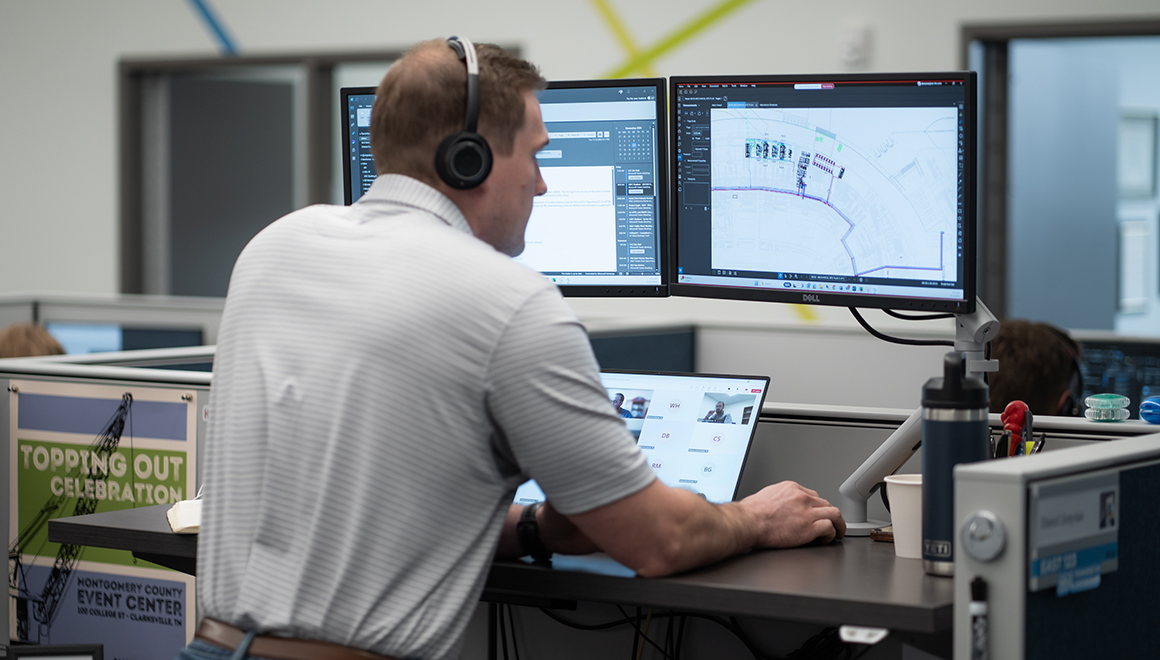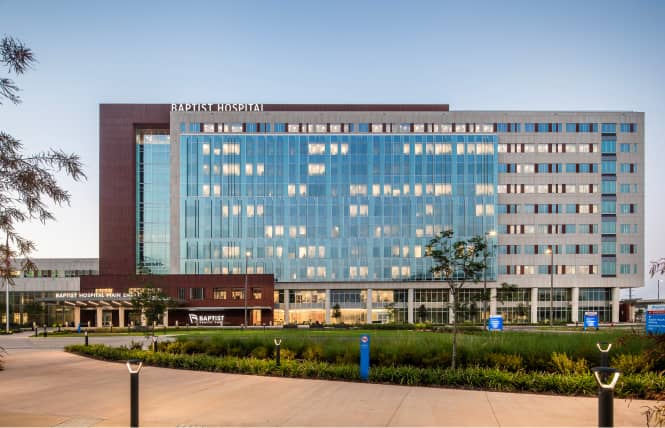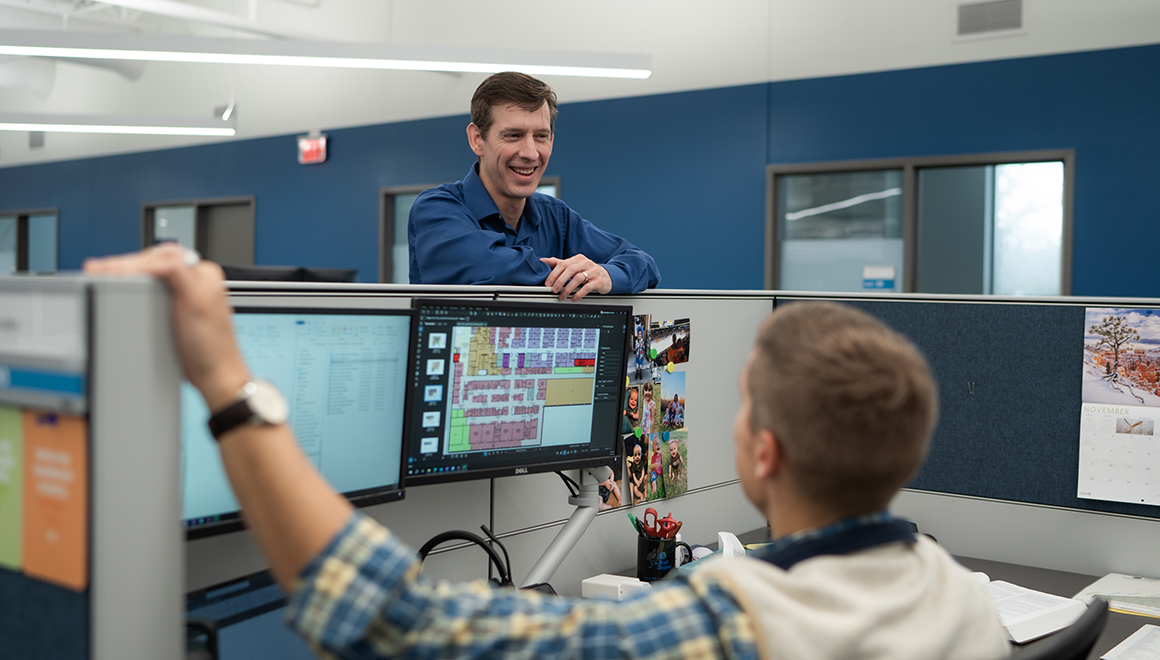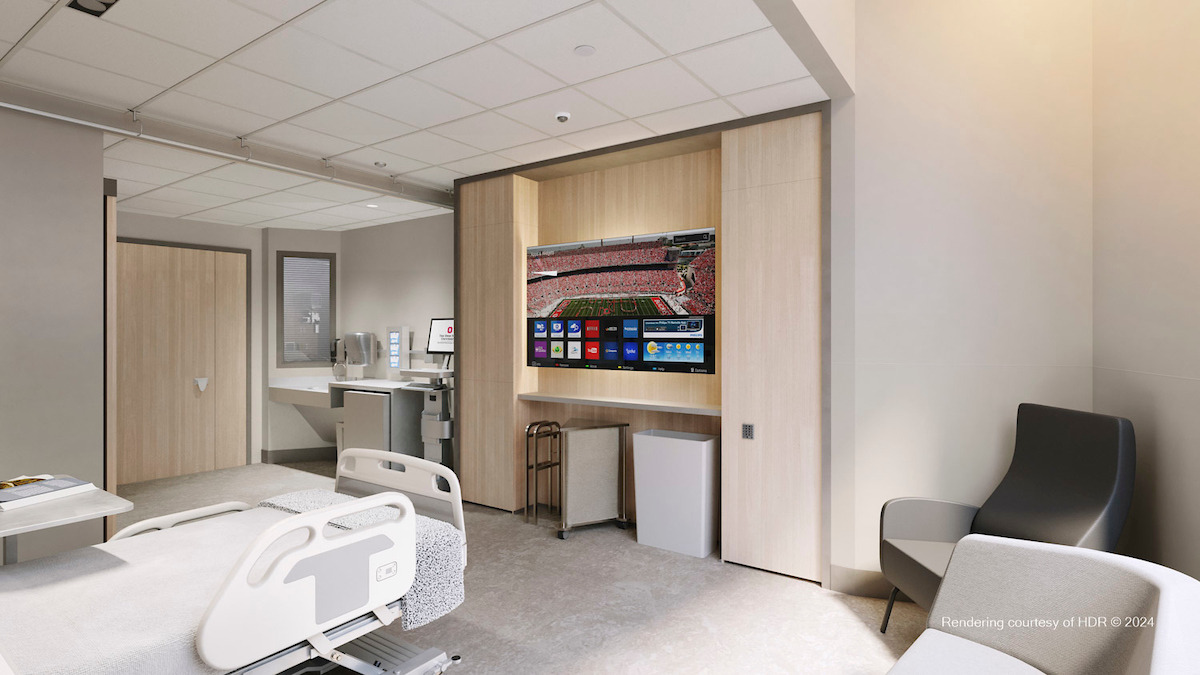Reimagining Patient Room Footwalls
Digital Command Centers that Enhance Patient Care and Autonomy
Imagine you are a patient, and you step into your hospital room. At the foot of your bed—at the “footwall”—you are greeted with a cutting-edge, digital command center. This center connects you and your family directly to healthcare information and education, communication with your clinical team and support faculty, a patient engagement portal, and a suite of entertainment options. At your fingertips, you have immediate, personal access to what you need to feel comfortable, connected, and informed.
This is a mission of The Ohio State University Wexner Medical Center’s (OSU WMC) new, 26-story, 820-room inpatient tower. The vision for this “digital footwall” was inspired by OSU’s goals of improving not only patient care but also patient autonomy—recognizing both are key to positive patient experiences. Located inside the focal point of patient experience, the patient’s room, the digital footwall serves as a scalable element that can be easily updated and customized with continual advances in connected patient care technology.
A Detailed Look at the Digital Footwall
OSU WMC’s digital footwall design features a unified large display which simultaneously shows real-time informational updates and other content. This display streamlines the traditional TV display, care board, clock, and other devices found in a typical patient room design. Through a single system, patients, families, and clinicians can access video conferencing, nurse call, dietary ordering, patient education resources (e.g., medications, procedures, patient self-care, discharge checklists), room comfort control (e.g., lighting, climate, window shades), entertainment (TV/movies/games/music and personal device casting), and access to in-room augmented reality, mixed reality, and virtual reality experiences and therapies.
Turning an Innovative Idea into a Reality
Providing technology, equipment, and clinical design expertise, our team employed the following steps to translate the innovative idea of a digital footwall into a design and construction process:
- Through extensive owner and end user interviews, we defined the desired components of the digital footwall.
- We then conducted several active work sessions and invited user groups and other stakeholders to interact with life-size mockups to determine key specifics, such as the size of the digital footwall monitor.
- Data was also gathered that proved highly valuable to informing decisions regarding the appropriate size and components of the digital footwall.
Beyond the foundational design software tools like Revit, BIM360, and Bluebeam Revu, our team collaborated with all the non-design stakeholders across nearly every operational department. Working with the owner’s IT leadership, we effectively introduced many familiar project management programs such as Box cloud storage, Trello, and dRofus, a planning and data management tool.
The complex back-end of the technology required several subgroups to take on the various task areas that comprise the digital footwall. These included equipment and hardware, control interface, environmental control, video conference, voice assist speech, and smart room. While the final interface appears to be a single stream of content and interactive controls, the design and implementation of the system involved consultants across disciplines.
Drawing on our team’s technical capabilities and expertise in performance criteria, procurement selection, and clinical workflow, we were able to integrate the conceptual vision into the built environment documents on time and on budget.
A New Standard for Patient Experience
A defining feature of OSU WMC’s new inpatient tower, the digital footwall serves as a defining feature of this cutting-edge hospital. Elevating patient care and autonomy—while also aiming to reduce staff load—the digital footwall is setting a new standard for how patients, families, and clinicians connect and how patients can take greater control of their wellness plans and experiences.




